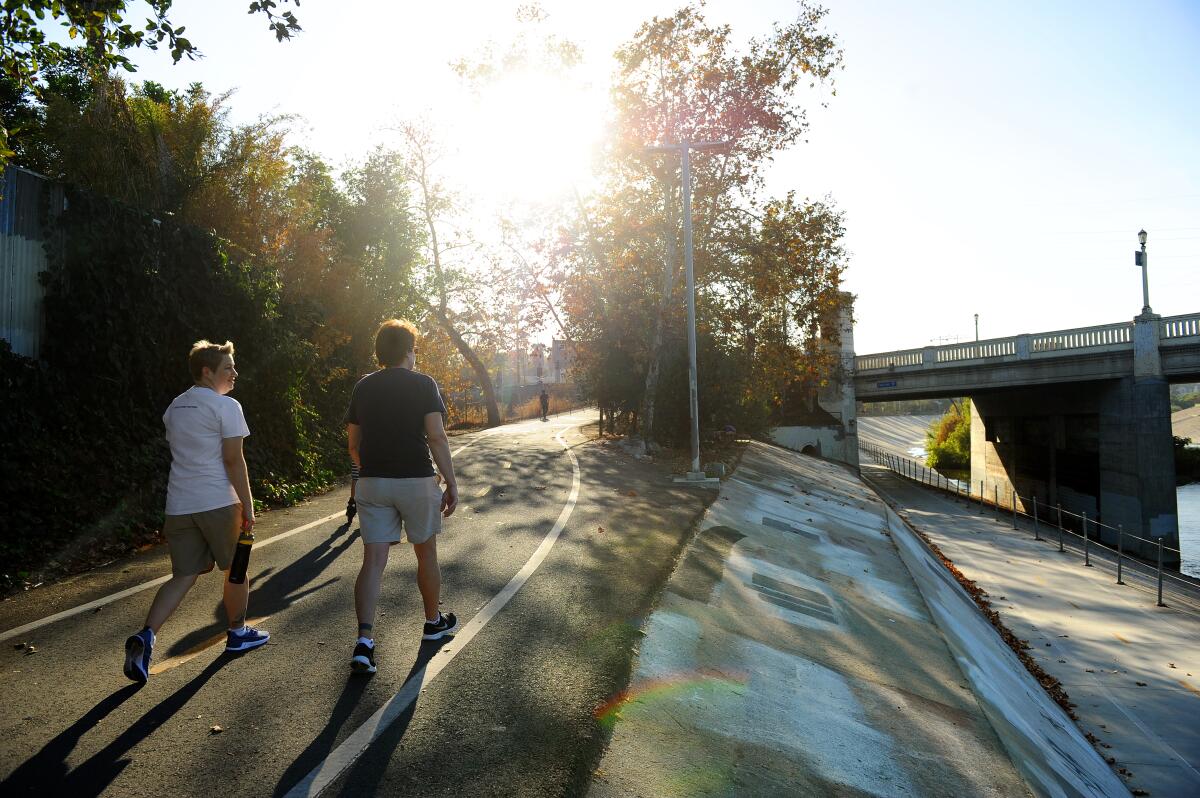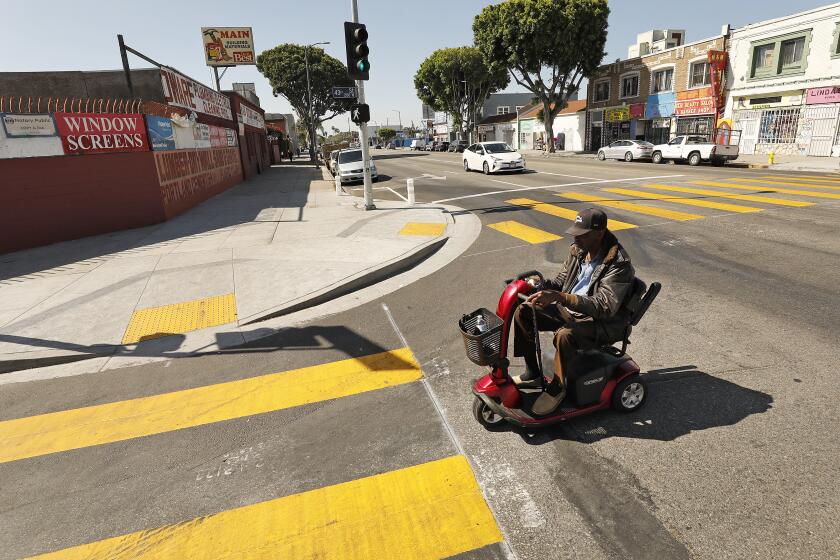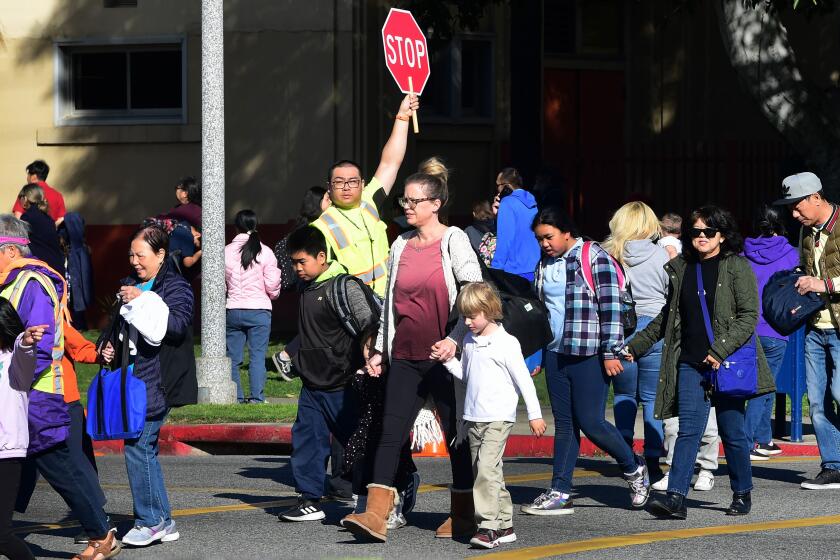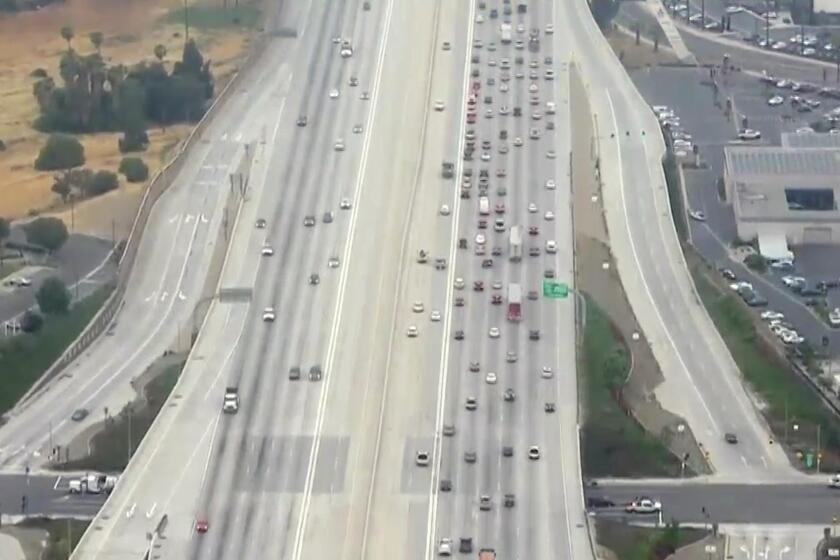Opinion: L.A. resolved to end traffic deaths. So why have they almost doubled?

- Share via
We are now one year away from 2025, when Los Angeles intended to reach zero traffic fatalities, and yet the problem continues to get worse, not better. After shattering records in 2022, the data is now in for last year, and it’s not pretty. As LAPD Chief Michel Moore recently said, more people were killed in traffic collisions last year than from murders.
In 2023, 337 people were killed by cars on L.A. streets, an 8% increase compared with 2022, according to the LAPD. In fact, deaths on our roads have nearly doubled since 2015 when the city committed itself to “Vision Zero.”
The fatality rate here is four times the national average, and we know what to do about it: Design roads that force drivers to slow down.
When I first started doing this work via Streets for All in 2019, we used to somberly state that a pedestrian is killed once every three days in Los Angeles. Today, that has increased to a pedestrian being killed every two days. Compared with 2015, when 88 pedestrians were killed on L.A. streets, 176 pedestrians were killed last year. Pedestrian deaths have doubled in just eight years, when they’re supposed to be on the decline.
The nation as a whole has seen a rise in recklessness on the road since the pandemic began in 2020, including driving under the influence, distracted driving, excessive speed and road rage. In that time, Los Angeles has become the most dangerous city in the nation in which to walk. Back in 2022, only New York City had deadlier streets for pedestrians. As of the end of 2023, Los Angeles has now eclipsed New York City, and by a lot (176 deaths versus 114). For the first week of 2024, the city experienced nine fatalities from car crashes, including five pedestrians. That means that more than one Angeleno was dying every day because of traffic violence during the first week of January.
Blocking off streets near schools is simply necessary. The inconveniences pale compared with the value of students’ lives.
As residents and voters in Los Angeles, we can have differences of opinion on whether we should carve out space for a safe, connected bike network or for bus-only lanes. However, all of us — drivers included — are pedestrians sometimes. We should all agree that any pedestrian death is unacceptable, and that it’s even worse that we keep breaking records year after year. It’s also unacceptable that we spend more money settling lawsuits from people hurt in our streets than we do making our streets safer. For example, in 2017 we spent $27 million on Vision Zero, and we spent $31 million on liability claim settlements from people who were hurt on city streets.
How do we reverse this? One way is with Measure HLA, on the ballot this March. Despite passing its Mobility Plan 2035 in 2015 to improve road safety and access for all modes of transportation, the city has long neglected it, either due to a lack of political will or poor interdepartmental communication. Measure HLA would have the city automatically implement its own plan anytime a street is repaved, saving money and ultimately saving lives. For pedestrians, the plan includes 560 miles of “pedestrian-enhanced districts,” which would feature targeted safety improvements for people walking.
The expansion of highways will do far more harm than the expansion of mass transit will avert.
If a serial killer were on the loose killing more than 300 Angelenos every year, we would launch a citywide hunt to end the spree. With car crashes among the top causes of death for kids in Los Angeles, and with a decades-high number of pedestrians dying, shouldn’t we treat road safety with the same sense of urgency?
Michael Schneider is the founder of Streets for All.
More to Read
A cure for the common opinion
Get thought-provoking perspectives with our weekly newsletter.
You may occasionally receive promotional content from the Los Angeles Times.












